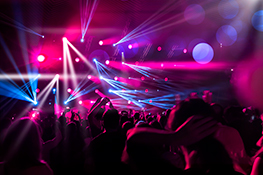The Complete Guide to Stage Lighting Wiring and Connections
Understanding Basic Electrical Principles for Stage Lighting
Before diving into the specifics of wiring and connections, it’s crucial to understand fundamental electrical principles. This includes voltage (measured in volts), current (measured in amps), and power (measured in watts). Knowing the voltage requirements of your fixtures is paramount. Incorrect voltage can damage equipment or create a fire hazard. Similarly, understanding amperage helps you choose appropriate cables and circuit breakers to prevent overloading. Understanding wattage allows you to calculate the total power draw of your lighting setup, ensuring you have adequate power supply and distribution.
Types of Stage Lighting Connectors
Stage lighting utilizes several connector types, each with its strengths and weaknesses. Common connectors include:
- Edison (E26/E27): These are standard household connectors, often used for simpler, non-professional applications or older fixtures.
- Stage Pin Connectors (e.g., 5-pin XLR): These are the workhorses of professional stage lighting, providing robust connections for power and data transmission (e.g., DMX). Different pin configurations exist depending on the application and manufacturer.
- PowerCon (True1 and True1 Power): These locking connectors are designed for high-current applications, providing a secure and reliable connection for power distribution. They’re favored for their durability and safety.
- Neutrik Power Twist: Similar in function to PowerCon, but offering a slightly different locking mechanism and available in various amperage ratings.
Understanding the differences and choosing the right connector for your needs is vital for safety and performance.
Wiring Stage Lighting Circuits: A Step-by-Step Guide
Wiring stage lighting correctly is crucial for safety and reliable operation. Always follow these steps:
- Plan your circuit: Determine the total power draw of your fixtures and plan your circuits accordingly. Don’t overload any single circuit. Consult electrical codes for your region.
- Choose appropriate cabling: Select cables with sufficient amperage capacity for the total load on each circuit. Use thicker gauge cables for higher amperage loads.
- Use proper connectors: Use connectors rated for the voltage and amperage of your system. Ensure secure and correct connections.
- Grounding: Always ground your lighting circuits properly. Grounding provides protection against electrical shocks.
- Circuit breakers and fuses: Install appropriate circuit breakers or fuses to protect your equipment and prevent overloads.
- Testing: Before connecting to the mains power, thoroughly test all connections to avoid short circuits or other electrical hazards. Consult a qualified electrician if unsure.
DMX Control and Wiring
DMX (Digital Multiplex) is the industry-standard protocol for controlling stage lighting. DMX control requires proper wiring using 5-pin XLR cables. Each fixture needs a DMX address assigned to it, determining its position in the control chain. Proper termination of the DMX line is essential to prevent signal loss or malfunction. Using DMX splitters allows you to control numerous fixtures from a single DMX output.
Troubleshooting Common Wiring Problems
Troubleshooting common wiring issues can save time and prevent potential hazards. Common problems include loose connections, blown fuses, faulty cables, and incorrect wiring. Using a multimeter can help diagnose electrical problems accurately.
Safety Precautions for Stage Lighting Wiring
Working with electricity always carries risks. Always adhere to these safety precautions:
- Never work with electricity when wet or in damp conditions.
- Always disconnect power before working on any electrical connections.
- Use appropriate personal protective equipment (PPE), such as insulated gloves and safety glasses.
- If you are unsure about any aspect of stage lighting wiring, consult a qualified electrician.
By understanding these principles and following the guidelines above, you can safely and effectively wire your stage lighting for stunning and reliable performances.


 Auditorium Construction Services
Auditorium Construction Services 